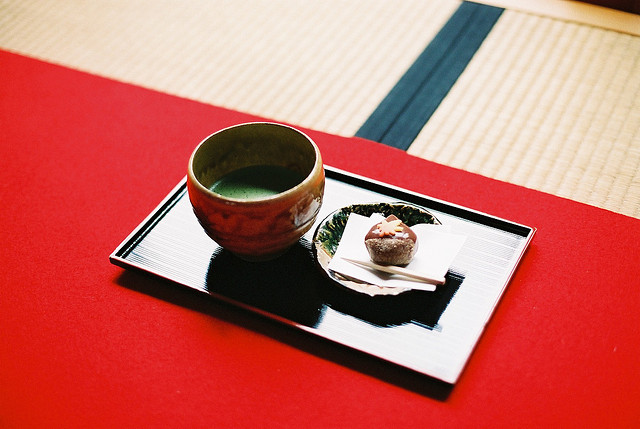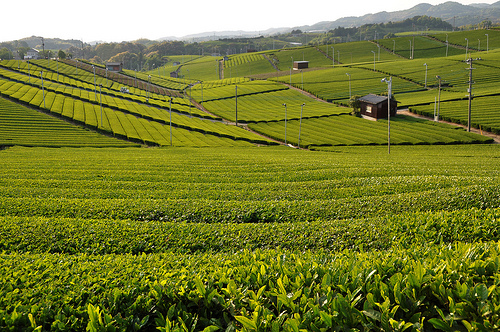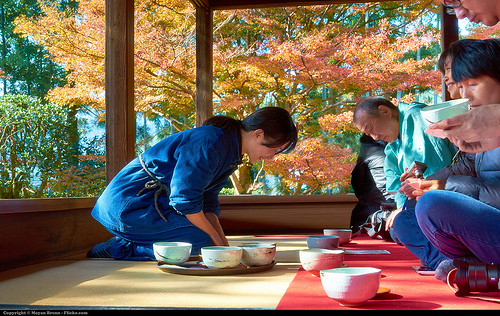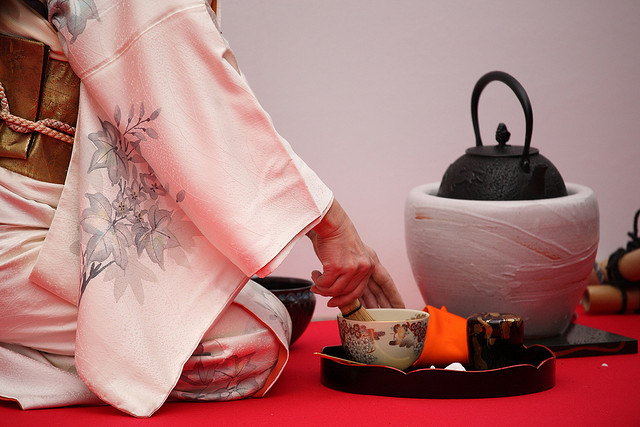
photo by Hideyuki KAMON
For everybody interested in the tea ceremony, we welcome you to the magical world of macha! As a Japanese person, I am always extremely happy to hear it when people have an interest in the tea ceremony. This column explains the etiquette and method of the tea ceremony to help you truly enjoy the tea ceremony experience. Please have a look through.
What actually is macha?

photo by kanegen
So everybody, do you really know what macha is? Well, green tea, known as nihoncha, is grown in Japan in huge quantities. Green tea is so popular recently people have even started drinking it out of plastic bottles. You can find it all over Japan. Of all the green teas, macha is the one Japanese are most familiar with. Macha is characterised by its beautiful green colour, pleasant taste and slightly bitter flavour. Macha-flavoured sweets and drinking bottles of macha and are very popular in Japan.
Enjoy the taste of macha at a tea ceremony.

photo by rumpleteaser
Macha is one of the most popular drinks in Japan. But apart from drinking it, there is one other way to enjoy macha – at the tea ceremony. I am going to introduce you to the tea ceremony here. For hundreds of years Japanese people entertaining guests have provided them with tea as a way of showing them respect. Over many years the provision of tea has turned into an art – the tea ceremony, where the enjoyment of tea follows a fixed pattern. This ceremony, a distinct part of Japanese culture that unites the host with their guests through tea, is called sado, ‘the way of tea’.
How is the tea ceremony performed?

photo by Moyan Brenn
There are many schools of tea. Each school has a different approach towards the tea ceremony. The host, who serves the tea, aims to make the guests as comfortable as possible so they can enjoy the taste of the tea. The tea ceremony has a reputation for being difficult and a very formal event. In fact, it doesn’t require any skills, and it is fine to make mistakes during the ceremony. We think it would be great if you experienced a tea ceremony and learnt for yourself how to serve tea. In this column, we will introduce you to the main features and the general flow of the ceremony.
The flow and features of the tea ceremony.

photo by mrhayata
Seating
The host of the ceremony guides you to where you will sit and drink the tea.
Temae
Once everybody has taken a seat, the ‘temae’, the preparation of tea can begin. Temae is the established ritual method of tea making.
1. Greeting
The start is a shared greeting between the host and guests. The nature of this shared greeting varies according to each school. We recommend you first observe the greeting between the host and a regular guest to see how it should be done. The most important feature of the greeting is that the host shows their gratitude to the guests for coming.
2. Accepting the sweet
At the tea ceremony, the host provides a sweet snack for guests. Generally, the snack is beautifully decorated, and is served to enhance the flavour of the tea. Usually the snack is served before the tea. Once the sweet is placed in front of you, without touching it, guests should appreciate the colour and style of the host’s selection. In time, the host or other guests will urge you to eat it. If you eat your snack before other guests, you should say ‘o-saki ni’ as a way of showing respect. The host and regular guests will take the lead at this stage. You can enjoy the sweet snack without worry!
3. Time for tea
Once the snacks have been eaten, it is time for the tea to come out. In the tea ceremony, guests share a serving of macha from the same cup passing the bowl along to each other. The important thing here is not to drink all of the tea. Drinking in small sips shows respect for the other guests. The tea bowl will be passed to you from the guest on your right. Before drinking the macha, you should make a small bow to the person who passed you the tea, then say ‘o-saki ni’ and make a small bow to the other guests who haven’t drunk yet. Placing the tea bowl in front of you, the guest should bow to the host and say ‘o-temae chodai shimasu’. When drinking macha, turn the cup towards you twice with your right hand. When you have drunk around 3 sips, pass it on to the guest next to you. When passing the tea, first place the bowl in front of you and bow towards the host. This shows your appreciation. Then you can place the tea bowl between you and the guest next to you. The drinking section of the tea ceremony is the most complicated procedure and might seem confusing at first, even many Japanese do not understand it. But the host and regular guests lead the way so there is no need to worry, please enjoy the unique style and tranquillity that the tea ceremony is famous for.
Leaving
After drinking the tea, the utensils, known as chagu, are displayed for everybody to appreciate. The host will explain the history and purpose of these utensils. This conversation with the host is one of the most fun parts of the ceremony. When you have finished looking, make a bow to the host and the regular guests before leaving. Expressing your feelings in this way is considered very important.
So, are you still interested in the tea ceremony?
What do you think? Some of you might feel the tea ceremony is stiff and formal, but please remember the root of the tea ceremony is the host’s effort to entertain guests by serving them tea. If you found this column interesting, we would love you to try the tea ceremony and experience Japanese hospitality.
